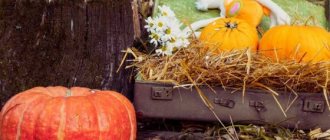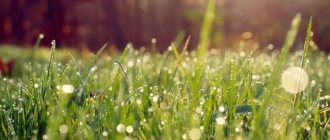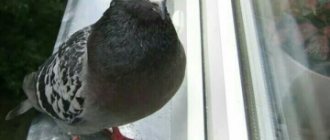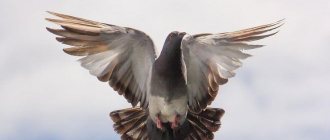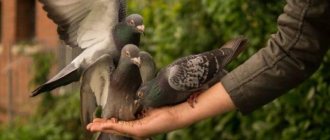Finding out the exact weather forecast today is not at all difficult. Not many of us are ready to trust the experience of our distant ancestors in order to independently predict this or that weather phenomenon, and why should we? It’s enough to turn on the TV to get the most reliable information on this issue. Keeping up with the times, modern people are moving more and more away from nature every day, which, in spite of everything, continues to send them its signals, using the language of ancient signs and observations carefully collected by our distant ancestors.
The animals around us in everyday life can serve as wonderful harbingers of weather changes, you just have to look closely at them. Sometimes such a weather forecast can turn out to be much more truthful than the promises of weather forecasters, based on the use of the most modern technologies.
Cat sightings
These animals are perhaps the most sensitive to changes in weather conditions. There are many folk signs associated with them, here are the most common of them:
- If a cat sneezes, it means it will rain;
- Licks its fur - invites bad weather;
- Scratching behind the ear - it could be snow or rain;
- Licks its tail, which means you should expect a snowstorm;
- Curls up into a ball - there will be frost;
- In a dream, he hides his muzzle in his paws or under his belly - bad weather and cold will soon come;
- If a cat sleeps sweetly, with its belly turned upward, it means the sun will be warm and hot;
- Raises the hind leg, which means there will be windy weather;
- Smoothes the fur on the head while washing with its paws - the weather will be good;
- Sharpening his claws on the legs of a chair indicates variable weather conditions.
Folk signs about the weather based on animal behavior
Content
- Natural instincts and weather What does the mustachioed striped friend prophesy for us?
- Dog Observations
- Livestock - what weather do they predict?
- What kind of weather can wild animals foretell?
- Domestic and wild birds - what kind of weather do they foretell?
- Other feathered weather forecasters
Today, finding out what the weather will be like tomorrow or the day after tomorrow is not difficult - just request the data on the Internet and the system will give you the result.
But how did our ancestors determine the weather? Animals helped them in this - these are not only wild inhabitants of fields and forests, but domestic birds and animals. As practice shows, folk signs about the weather based on the behavior of animals give results that are residually accurate and not inferior to the forecasts of official weather forecasters.
Natural instincts and weather
It is easy to determine what the weather will be like by paying attention to what the behavior of an animal, wild or domestic, will be - most of them hide in a secluded place before bad weather, showing a certain amount of anxiety. But remember - an animal can not only predict bad weather by its behavior, as well as clear sunny days, and in this they are helped by innate instincts, and this is what we will talk about next.
What does the mustachioed, striped friend prophesy for us?
As practice and observations of our ancestors show, cats are probably the most sensitive animals, sensitive to any change in weather. Among the huge number of signs associated with cats and the weather, we can highlight the following, the most common and reliable:
- If the cat starts sneezing, wait for the rain and how long the animal sneezes can determine how long the bad weather will last.
- When an animal begins to lick its fur, it invites misfortune into the house, and if it scratches behind its ears, there will soon be rain or snow.
- If a cat licks its howling tail, expect a snowstorm outside, but if it curls up in a ball, it will be frosty, and if it hides it under its paw, expect bad weather.
- When a mustachioed friend sleeps on his back, with his tummy open, expect warmth and hot sun soon, and if he tucks his hind legs under him, the weather will be windy.
- If he sharpens his claws on a chair leg, it means a change in the weather.
Dog Observations
Our faithful four-legged friends also perfectly sense changing weather conditions, fluctuations and changes in temperature and pressure. You can also perfectly predict the weather by their behavior:
- When a four-legged friend sways his body from side to side or lies on his back, there will be windy weather, and if he falls and sways on the grass, there will be wind and rain.
- If a dog swings in the snow, there will be a blizzard in the near future, and if several four-legged dogs run after each other in the snow, expect a quick thaw.
- If the dog curls up in a ball like a cat, this indicates the approach of cold weather, but if it catches snow in its mouth, the weather will soon worsen.
- If it eats grass, expect heavy rain soon, but if it rolls on the ground in winter, it’s worth waiting for cold and frost.
- The dog eats little and sleeps a lot - the weather will change for the worse.
Livestock - what weather do they predict?
Pets, which have lived side by side with humans for many centuries, can also be used to judge what the weather will be like by their behavior. And this is where our ancestors talk about the following weather signs and behavior of the domestic stingray:
- If the cow begins to eat more, expect heavy precipitation in the form of rain, snow or hail, but on the eve of a heavy downpour, the cow may lose milk.
- If a cow rushes from the pasture to the barn, expect frost, but the horse shakes its head and wheezes - for rain, snorts - for warm and sunny, clear weather.
- If it’s warm, the horse will lie down on the ground, but if it’s cold, it will stand, but if the rams start fighting, the donkeys bark desperately for no reason, expect a strong wind.
- When the sheep and pigs begin to huddle in groups, warming themselves against each other, expect severe frosts, but the sheep’s wool will be softer if there is increased humidity and dampness, and when heat is expected, it will become coarser.
- When a pig pulls hay and straw, leaves, any rags into the barn, a snowstorm is expected, and when it squeals often, a snowstorm is expected.
What kind of weather can wild animals foretell?
Wild animals are more sensitive to weather changes - while domestic animals have somewhere to hide in bad weather, the forest brethren do not have such an opportunity. What kind of weather does this or that behavior of wild animals indicate - folk signs say the following:
- If a chipmunk begins to move to higher ground, expect a flood soon, and if rain is expected, they will whistle thinly, and before a snowstorm, they will begin to scream heart-rendingly.
- Large horned inhabitants of the forest, deer and elk, just before bad weather, simply become nervous and do not find a place for themselves, often moving from one area to another.
- If moles begin to actively crawl out of their holes to the surface and at the same time leave behind high piles of earth, heavy rains are expected.
- If beavers work intensively day and night, and are in a hurry to raise their dam, expect high water, with thunderstorms and thunder.
- Before heavy, prolonged rains, frogs will go out onto dry land, but if in the evening they started a sonorous and polyphonic concert on the shore, the next day will be a sunny, clear day.
- If a lizard senses the approach of a damp cyclone, it will simply sit on large stones and will stubbornly bask in the sun.
- You are lucky to find a squirrel’s nest in the forest - you are incredibly lucky, but pay attention to exactly what height from the ground it is located. If it is located close to the very top of the tree, the winter will be quite mild, without severe frosts, but if the forest beauty does not dare to position itself high, the winter will be frosty.
- If warm and clear days are coming in the near future, the squirrels come to life and scurry around the trees a lot, but warming in the bitter cold is heralded by a nut lover running across the snow crust.
- The same sign in cold weather - a thaw - is also observed by voles that have climbed to the surface from under the snow. But if they quietly squeak under the snow, in their burrows, without showing their faces from them, increased frost and snowstorms are coming. Among other things, hares also feel the approach of cold weather - they will get closer to a person, but the steppe inhabitants say that if a saiga seeks refuge in the bushes, there will be a strong snowstorm.
Domestic and wild birds - what kind of weather do they foretell?
Birds - by their behavior you can also interpret what kind of weather to expect in the near future. For example, if a chicken tucks its paw under itself, alternately changing it, expect a cold snap soon, but if in winter the rooster crows earlier than its usual time, expect a thaw in the near future.
When chickens and ducks do not rush to the chicken coop when a light rain comes - and you should not rush, since it will soon pass and the clouds will clear. But when ducks gather in a group on some hill, you should expect prolonged and heavy rains.
But domestic canaries, parrots and other feathered creatures have fallen silent on their perches - one cannot count on rapid warming in the very near future.
Other feathered weather forecasters
Probably each of us knows that if swallows begin to fly low above the ground, expect rain, while other birds will huddle closer to the ground in flight when the cold weather approaches, but if the weather is warm, they will soar high into the sky.
The nightingale sang non-stop all night - wait for the wind and storm, which will not allow the gray tenor to perform his arias in the very near future. When the sparrow climbed into a stack of straw, expect a snowstorm, but he begins to worry, gathering in flocks before the drought, scurrying from tree to tree.
If jackdaws begin to swim in the sand in the summer, this behavior of the bird foreshadows heavy rain soon.
If a bullfinch sings, it is calling for a blizzard, but if a magpie has huddled under the roof, there will be severe frosts, while swallows hide closer to a person’s home before a storm. The cuckoo crows all day long - consider it to be a thaw in the winter, but rain and fog in the summer. What’s interesting is that Americans interpret this sign exactly the opposite, when the cold is foreshadowed by a cuckoo that is silent all day long.
If the rooks return home, the snow will melt in a month, and if the swallows have arrived, the first spring thunder will soon strike.
Signs about the weather and the behavior of insects
Insects can also foretell the weather by their behavior, whether the day will be clear or rainy, expect warming or cold weather. For example, grasshoppers chirp on a clear and sunny day, but mosquitoes hide under the leaves before the rain, like all the other flying little things.
If a ladybug takes off with ease from your hand or a branch - this sign promises sunny weather, but when it crawls like a snail and tries to get somewhere - expect heavy rain. If there is a spider in the center of the web, it means it will be warm, but if it crawls under the foliage or sits down on the edge of the web, it means there will be bad weather, with rain and winds.
Pisces and weather signs
In Japan, every office and practically every home has its own artificial ponds - this is not only a piece of furniture, but also an opportunity to foretell what the weather will be like by the behavior of fish. For example, if a fish jumps out of the water, it means it will rain, but if it lies on the bottom, a hot day is expected.
If the bindweed behaves restlessly, bad weather is expected, and the catfish will lie motionless on the bottom, huddling under stones and snags if possible.
Dog Observations
Faithful four-legged friends are good at feeling temperature fluctuations, both in the air and on the surface of the earth, so they can also accurately predict the weather .
- If the dog sways in different directions while lying on its back, the weather will be windy;
- Lying on the grass - be exposed to rain and wind;
- Lying in the snow - a blizzard;
- Chasing each other in the snow - a thaw will come soon;
- The dog curls up into a ball - the onset of cold weather;
- If there is snow, the weather will worsen;
- If you eat grass in spring or summer, you should wait for rain;
- Riding on his back in winter means the onset of frost;
- If he gets into the water, it will rain soon;
- When a dog begins to eat little and sleep a lot, the weather will soon change for the worse.
Signs with insects
Signs of insects and fish are another way to determine the weather. If you see a lot of spiders, then the weather will be warm and sunny, but if there are none, expect a thunderstorm. Bad weather and rain are also indicated by a spider sitting in the middle of its own web.
The day turned out to be hot - the flies would be scurrying around since the morning, before it got cold they would hide in secluded corners. If you see a lot of May beetles in the spring - the summer will be hot, you accidentally saw several dragonflies flying low - this means there will be precipitation soon. You can hear the loud chirping of grasshoppers - good weather is guaranteed for the coming days.
In addition to insects, fish are also sensitive to weather changes. So, for example, fish in an aquarium will sink to the bottom if it is sunny and clear in the near future, but if the sky is gloomy and it is going to rain, they will rush around the aquarium. Fish in reservoirs behave similarly.
I happened to see how a fish playfully jumps out of the water and grabs insects - wait for the rain, and crucian carp and roach lie on the bottom before a thunderstorm, loaches can float to the surface at this moment. And seeing a catfish on the surface of the water means significant warming.
And in conclusion, it is worth saying that the signs have been compiled over centuries, they have been tested by time and people. And modern scientists still cannot decipher how animals can “recognize” snow or rain days in advance. But maybe this is a mystery that we have not yet learned to solve, and therefore the signs should be taken on faith. How true or false they are, whether you can trust them or not - the weather itself will soon show this. And all you have to do is draw conclusions and that’s it.
You will be surprised, but you can find out the weather not only by animals, but also by observing insects, because they are also sensitive to its changes. If there are a lot of spiders, then the weather will be good and stable, but if they are not visible at all, a thunderstorm is expected. Wet weather is also indicated by a spider sitting motionless in the middle of the web.
Before a hot day, flies appear in the morning, but before it gets cold, they hardly appear. If there are a lot of beetles in the spring, then the summer will be dry. And if you accidentally see a swarm of dragonflies, then expect precipitation in the next few hours. The chirping of grasshoppers and bright fireflies foretell good weather for the whole day.
Other animals
If you have the opportunity to observe forest inhabitants or any other domestic animals, you can at least make your own personal weather forecast every day. It's so simple and exciting.
- A squirrel that has placed its nest too low feels the frosty winter. If she makes her house high, the winter will not be too harsh;
- Woodland chipmunks always scream loudly before a thunderstorm;
- Rams and sheep push their foreheads - there will be a strong wind;
- Hares get closer to human habitation - to the harsh winter;
- Before bad weather, horses wheeze loudly, with the onset of warmth they begin to snort, and on the eve of heavy rain they shake their heads and throw them back;
- Anticipating dampness, the horses lie down on the ground. This usually happens in the summer. In winter, such behavior portends rain;
- If the singing of frogs in the swamp has died down, it means that there will be frost soon;
- A loud frog chorus on any body of water means approaching heavy rain;
- Before the rain, cows begin to actively nibble grass, as if trying to eat for future use;
- Any livestock that huddles together senses the onset of bad weather;
- Almost all cows begin to lose milk before rainy weather;
- If the moles are raking the piles higher, it means bad weather is coming soon;
- Mice running out from under the snow anticipate an imminent thaw;
- The strong squeaking of mice is heard on the eve of a strong cold snap;
- Domestic pigs feel strong frosts well and huddle closely together;
- Before a storm, you can see how the pigs begin to actively remove straw and burrow deep into the interior.
Passing from one mouth to another, weather signs associated with animals have survived to this day. To believe or not to believe is a personal matter for everyone. However, touching the deepest folk wisdom, through unity with nature and our smaller brothers, will appeal to many, making each of us a little more attentive to the world around us.
Livestock
Signs about weather about animals can be interpreted by livestock:
- Horses can predict events outside the window by their behavior. If the horse wheezes and falls to the ground, expect bad weather.
- If sheep and rams are hitting their foreheads, expect a strong wind.
- It is possible to determine the weather by the behavior of pigs. If there is a storm, the animals take straw, bury themselves in it and press tightly against each other. This is what many other animals do when it gets cold.
Cows can predict the weather forecast. To do this, you need to keep an eye on the cattle overnight. If a cow eats and drinks a lot, it will rain in the morning.
Signs with fish
Many species of fish are acutely aware of weather changes. For example, most aquarium fish lie on the bottom if the weather is good, but if they rush around the aquarium and muddy the water, it will rain. Fish in reservoirs also have the ability to predict the weather.
If a fish jumps out of the water and catches insects, then most likely it will rain. Roach and crucian carp hide at the bottom before a thunderstorm, while the loach swims out. Seeing a catfish on the surface of the water is a harbinger of warming.
https://www.youtube.com/watch?v=zqbchJxJKuo
Scientists are still trying to understand how animal organisms work and why people do not tend to sense weather changes so accurately. So it’s worth carefully observing the behavior of our smaller brothers and always staying in tune with nature.


